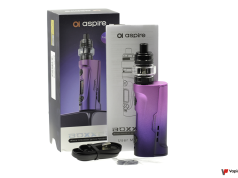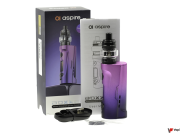“America’s latest moral panic – the fear that JUUL e-cigarettes are turning the nation’s youth into nicotine addicts – showed no signs of subsiding this week, as a slew of new media reports fanned the flames. An assortment of outlets ranging from local news sites and health pages to AOL and Fox News affiliates all put out stories on JUUL use by young people, and the tone was relentlessly negative,” reported my colleague Fergus Mason earlier this week.
“This effort is obviously prompted by the Campaign for Tobacco-Free Kids, which has its fingerprints all over it (e.g. here, here, here, here, here, here, here) as part of its campaign to wipe out the vaping industry by forcing FDA to bring forward extremely burdensome and restrictive regulation that will leave only a few products from tobacco companies on the market, if that.” added Bates.
The public health expert asks what should be an obvious question, but clearly is not. “How can anti-vaping activists be sure it isn’t a reason for celebration rather than panic? No-one currently pimping up the moral panic can be sure the rise of Juul is not simply the best news in years. ” And in fact scientific evidence keeps indicating that indeed it may just be.
Thanks to vaping, smoking rates have dropped significantly
This newly released survey data is also significant because it confirms what many public health experts have been pointing out. That is, warnings saying that vaping will make smoking popular again and that e-cigarettes may act as a gateway to smoking, are unfounded, as in fact cigarette consumption by teenagers has reached “historic lows”.
Urging journalists to ask themselves a number of questions before reporting a news
In the meantime, Bates is urging all journalists to “Please dig deeper” and and ask the following questions before writing articles based on misinformation that could have detrimental effects on an unknowing public.
- “How do we know about the rise of vaping in schools – what is the data and where is the source? How much is anecdotal, what is the source of those anecdotes and how usefully quantified are they?
- Has the success of Juul been at the expense of other e-cigarettes – is it adding to the total use or displacing existing use? (You can find data on this for total sales, but not disaggregated by age)
- What is happening to teenage smoking in those places where vaping or Juul is rising (and how do we know?) – is vaping/Juul suppressing cigarette smoking? Judgements on vaping or incomplete and misleading without information on what’s happing on smoking?
- What has been the pattern of teenage smoking since vaping increased from 2011? (Clue: teen smoking has fallen sharply)
- Are the teen users just messing about with these products and using them occasionally or is it really an entrenched ‘substance use’ issue – these are very different behaviors? What is the frequency distribution of use? How much is daily and how much weekly or monthly? Not all vapers are the same.
- How much safer is vaping/Juul compared to smoking? (Clue: much less harmful). This matters a great deal because if the former is displacing the latter, you may be witnessing (and misreporting) a major public health win.
- What are the actual risks vaping/Juul compared to non-use? (Clue: not much more – nearly all the health risk of smoking arises from smoke and products of combustion. Smoke is not created in vaping)
- If your sources are saying that kids will be addicted to Juul, what is their basis for saying this? Not all nicotine products are ‘addictive’ and it depends how they are used.
- What do kids think of vaping compared to smoking? Is vaping making smoking uncool?
- Who is promoting these stories and what are they trying to achieve? Would doing what they propose to do address the perceived problem here, or would it cause much wider impacts? (Clue: yes, they are campaigning for regulation that would close down most of the vaping industry, while leaving the cigarette trade untouched)
- Have you got to the bottom of where this story is coming from and why? Are you being played by ‘abstinence-only’ activists who essentially want 99% of vaping products de factobanned through burdens of regulation, even if all that would do is to protect the cigarette trade and gift the surviving vaping market to Big Tobacco?
- It wasn’t that long ago we were being told that vaping was rising because of ‘kiddie flavors’ (supposedly like Gummy Bear and Cotton Candy) and that most flavors should be banned… was that explanatory theory of teenage vaping wrong? Was it the flavors theme just an expedient campaign message in favor of yet more damaging regulation?”
Does anything go in health and science journalism?
Bates concluded his blog post by pointing out his disappointment at the fact that such unsound stories are being released by “credible” organizations such as the New York Times and CNN. “The extraordinary uncritical hype generated around this vaping story leaves me wondering if anything goes in health and science journalism (or should we recognize it as activism), and we should simply disbelieve everything they report.”













